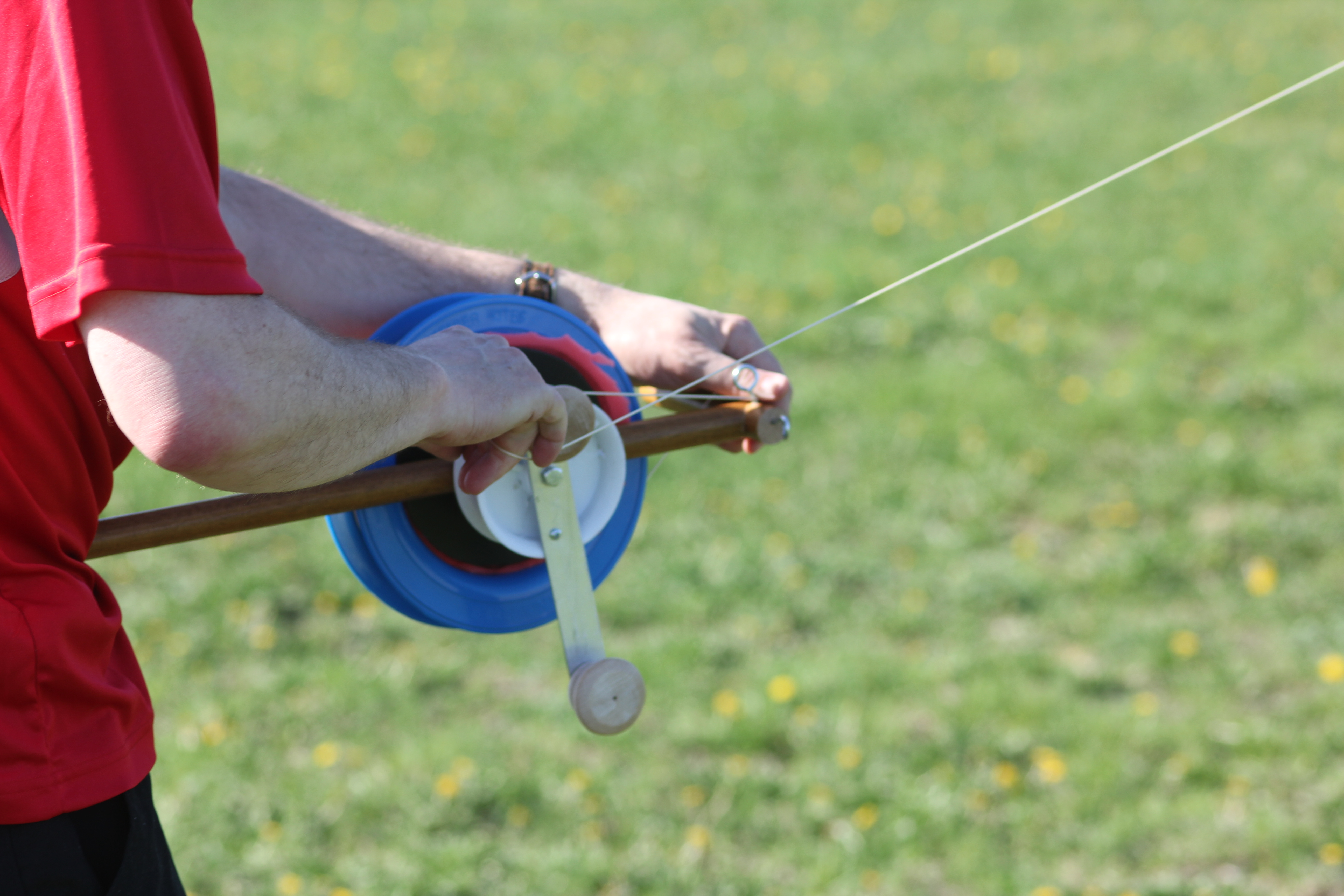
Handheld “halo” kite winders retrieve a lot of line with each turn, but they’re hard to use with powerful kites. This DIY winder pulls in big kites fast using a capstan — a long crank on a small drum — to increase your leverage and protect the halo from the stresses of winding. It’s easily built from hardware-store parts, breaks down for travel, and will even let you attach mechanical power. It’s great for kite aerial photography (KAP) or for flying several kites at once.
Capstans require some tension on the loose “tail” of the line to prevent slippage on the drum. This winder uses a simple adjustable “slip clutch” to give the capstan the proper tension, so you can pay attention to the kite, not the winder.
Fly your kite with just the halo, then mount it on the winder for retrieval. The long double-T shape is easy to prop on a hip, and the crank gives you the choice of high-power or high-speed knobs. Use the winder to manage several kite lines at a time while doing your real flying with just the lightweight halo reels.






















